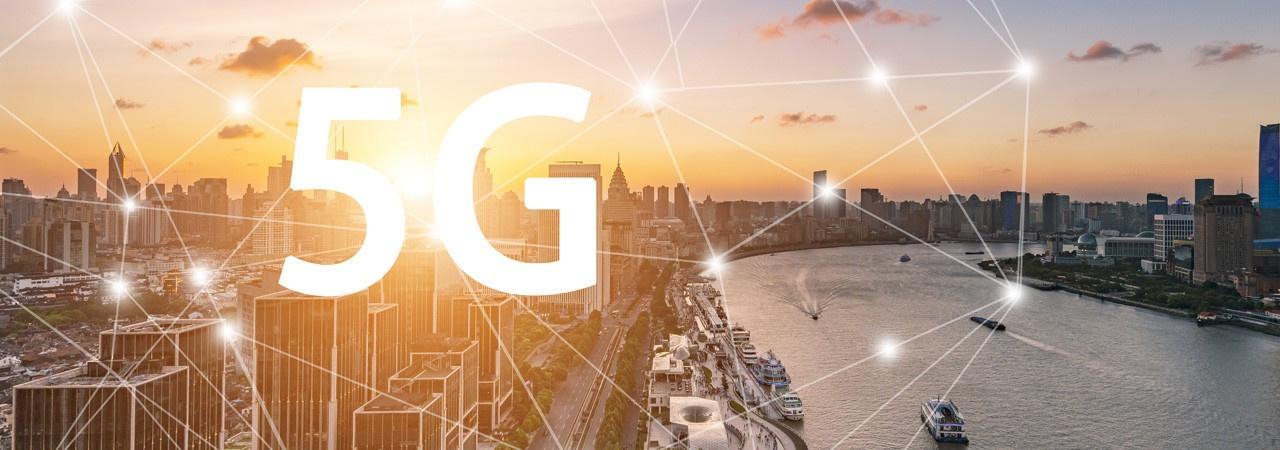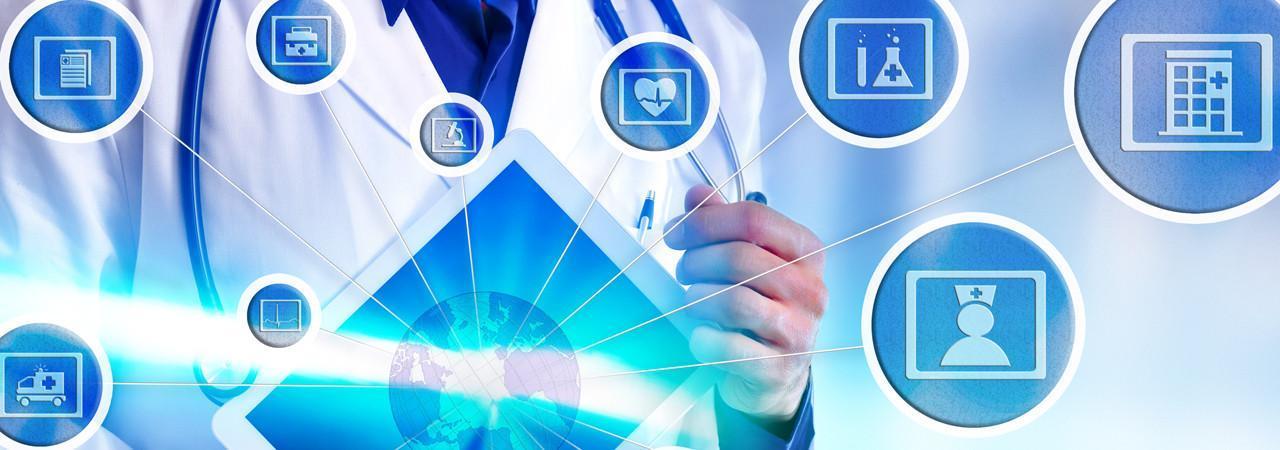The UK government has proposed extending its ban on ransomware payments to cover the entire public sector in an attempt to deter cybercriminal attacks and protect taxpayers.
The GDPR deadline day of 25th May has been and gone, but sticking to the legislation remains as important as ever. This is because GDPR is, in fact, not something that can just be 'done'; instead, it is ongoing and needs to be constantly changed and updated. The onus is on housing associations to comply with GDPR not just today, but in six months, a year, two years, and beyond.
When N3 contracts expired in March 2017, NHS Digital was faced with the challenge of replacing it. The idea was to replace a long-term single supplier contract with a marketplace of network options.
The digitisation of the NHS (one of the biggest employers in the world) is a huge task, and it begins with the opening up of the organisation's underlying data network. Over the past year, the NHS's N3 network has been being migrated to a new network: Health and Social Care Network (HSCN). HSCN has been built by a number of co-operating suppliers, including Exponential-e.
Our Public Sector Director Afshin Attari recently sat down with Innopsis's Lynne Magennis and Michael Bowyer for a roundtable discussion on frameworks in the Public Sector.
Technology is omnipresent in young people's lives and is opening up new channels of learning across the education sector, with pupils, students and staff utilising Cloud and video calling platforms both in and out of the classroom.
At the same time, cyber security is evolving at a rapid pace to answer ongoing concerns about pupils' safety online and the integrity of confidential data - concerns that have become even more critical with the move towards remote learning and virtual classrooms. Our full range of solutions provides schools, colleges and universities with the means to ease this transition to new ways of learning, ensuring IT infrastructure continues to put learning at the centre of everything, while meeting all compliance requirements and enabling more effective use of the available budgets.
Please explore these case studies for examples of what we have already achieved for customers across the education sector, helping them sustain their profitability and growth while keeping the learning experience at the centre of everything.
New health secretary Matt Hancock has been beating the technology drum. As well as announcing that almost £500 million would be made available for technology, he's also asserted that the service needs more apps. However, it’s fair to wonder: is this the right avenue to funnel resources?
The UK has found itself in an unprecedented situation over the last few weeks with COVID-19 forcing people and businesses into near enough lockdown, and the number of employees needing to work from home is continuing to skyrocket.
A common perception of contact centres is that their callers - be they customers, patients or end users - only contact them if something is wrong. Nonetheless, throughout 2020, we have seen this underrated (but nonetheless essential) part of the overall customer experience enter a new stage in its evolution.
A great agent experience means a great caller experience
Contact centres of any sort are very much social environments, where the human touch is everything. And that engagement must be maintained throughout every point of contact between agents and callers, whether it's face-to-face over a video link, over the phone, or through online chat.
But throughout 2020, we have seen a shift in how this is accomplished, with the opening up of a wide range of new channels of communication through which callers can engage with agents. This includes voice, online chat and video - all of which provide the agent to access sophisticated Unified Communications platforms that not only deliver a consistently high-quality customer experience, but through Cloud technology and intelligent automation, are fully integrated with the rest of the IT ecosystem. This way, with the full range of caller data at their fingertips and direct connections to internal Subject Matter Experts (SMEs), contact centre technology becomes invisible, and agents are free to focus on delivering successfully resolutions.
Beyond reducing the average time spent on calls and increasing the number of quick, successful resolutions, this model of Unified Communications ensures agents can continue interacting with their colleagues when working remotely, just as they would in the traditional contact centre environment, leading to a smoother, less stressful environment that enhances their performance and wellbeing. And this, in turn, leads to better employee retention, by ensuring agents are properly supported in their daily work and ongoing development.
A model for future contact centre environments
It's often argued that the move to a Cloud-based model for contact centres was a reactive one, in direct response to COVID-19, and to a certain extent this is true. But while it's true we could not have envisaged such a fundamental transformation taking place so rapidly and such a scale just one year ago, Cloud adoption has been steadily on the rise for a number of years now. In other words, the technology needed to implement remote working at scale has been available for some time.
Nonetheless, once the required standard of connectivity was achieved, there were still numerous challenges to consider. By their very nature, contact centres work with a high volume of personal information, which means privacy, data security and compliance are all key requirements. Overcoming these depended on close collaboration between organisations and their technological partners, with many longstanding partnerships across the UK revealing their true value. In particular, technology partners who could integrate multiple channels of communication within single platforms - true Unified Communications solutions – proved invaluable to the success of many organisations' Cloud transformations.
Bringing together customer service and business growth
With the move towards a distributed workforce now very much complete, organisations in both the public and private sectors are shifting their focus from implementation to long-term growth and sustainability. Historically, gathering actionable customer data is often time-consuming and inefficient, especially when working with multiple channels of communication. Unified Communications and Cloud-based contact centres solve this problem, allowing call data to be consolidated within a single platform, with all sensitive information stored securely, in line with all applicable data protection regulations.
Streamlining and automating this process provides contacts with a steady stream of valuable call data, ensuring targets are consistently met, opportunities for improvement are identified and acted upon, and agents enjoy ongoing professional development. But beyond that, this provides the wider organisation with a real-time view of how their products and services are being delivered 'on the ground', and how their customers, patients or end users view them. As this model becomes more and more established across a range of sectors, we expect to see contact centres shift from a purely reactive role, to playing a major role in organisations' ongoing business growth.
A model for future contact centre environments
While we are still very much in the early days of the 'new normal', the principles we have explored in this article are far from theoretical. At Exponential-e, we have participated in these contact centre transformations numerous times throughout 2020. An excellent example of this was our partnership with the NHS in South-East London, in which we successfully helped GPs and frontline staff transition to a remote working environment, continuing to engage with their patients through multiple channels from wherever they are based. Our UC-ONE for Health solution was deployed across six boroughs and 206 GP sites, integrated with existing EPR systems, with the first 1,000 users online in just 48 hours. The system was subsequently extended to more than 5,000 frontline staff over the course of three weeks, ensuring the usual high standard of patient care could successfully co-exist with social distancing requirements. All this was accomplished completely remotely, thanks in part to Exponential-e's deep experience with Cloud migration and well-established network.
This approach is by no means confined to the healthcare sector. The beauty of the Cloud is its flexibility and scalability, which means similar strategies could be used to execute Cloud transformations in contact centres across a range of challenging industries, to the benefit of organisations, agents and callers alike.
Afshin Attari, Exponential-e's Director of Public Sector & Unified Platforms, discussed these topics in greater depth at the recent Servion webinar, "Realigning CX to the New Normal with Best of Breed Service Providers". Click here to watch it.
At first glance, 2020 was the year organisations in both the public and private sectors wholeheartedly embraced Unified Communications (UC), in direct response to the challenges presented by COVID-19.
Moving from attractive concept to proven model
The most important development for UC in 2020 has been the successful delivery of benefits that were previously seen as purely theoretical. In this way, the technology has moved from being simply promising to a proven, well-established model that organisations at all levels have been successfully utilising for several months now. Key developments have included:
- Home working has moved from being occasionally utilised to the new norm for the workforce as a whole, with it now being expected by potential employees. Longstanding concerns about its effect on productivity and morale have near-universally proven to be unfounded, with many employees stating they are happy with more flexible working arrangements.
- Customers and end users now expect to be able to contact agents through a range of different channels – including online chat, video calling and voice calling – with a fully consistent quality of experience across all of them. As a result, the overall UX experience has become a key priority across all platforms.
- As UC is now firmly established and has demonstrated its full range of capabilities, providers are shifting their focus from demonstrating what the technology can offer, to delivering (and where necessary, developing) solutions to achieve specific business goals. In this way, we are seeing the relationship between UC providers and their customers shifting, from the simple provisioning of technology to robust partnerships that support sustained business growth, scalability and operational resilience.
We've seen these trends play out throughout the year, in numerous organisations' successful migrations to remote working and the Cloud, and as we approach the end of 2020, they show no sign of slowing down. So as we approach the new year, where is this leading?
2021 and the next step in Unified Communications
If 2020 has taught us anything, it's to expect the unexpected. While we now have a reasonable idea of what the post-COVID landscape will look like, agility will be the primary factor organisations will seek to cultivate in their workforce and infrastructure. Pivoting in response to future crises must be a question of days or weeks, not months, and so we expect the long-term trend of Cloud migration and an increasing emphasis on Cloud-first and multi-Cloud strategies to continue. This will, in turn, support the implementation of technology that drives remote communication and collaboration, with a lot of on-premise technology – and even the office space itself – becoming increasingly streamlined in order to control costs and maintain scalability. Similarly, we would anticipate more and more services to be delivered through a consumption-based model – something the Cloud excels at.
In terms of communication channels, integrated, multichannel communication will introduce a number of opportunities regarding AI, with chatbots providing contact centre staff with an extra level of efficiency, without compromising the quality of caller interactions. This will grant organisations an additional level of flexibility with regard to employee working hours. The implementation of AI combined with a secure, effective remote working solution, and consumption-based pricing means that organisations and their employees are no longer limited to the traditional working hours or office environment. For example, contact centres can ensure staff are always available to respond to callers, and agents can arrange their working hours around family – a win/win situation for everyone.
Following our win at the 2020 UC Awards, where we were awarded Best Cloud Communications Provider, our Director of Public Sector & Unified Platforms, Afshin Atari, sat down with UC Today to discuss his perspective on what this year has meant for Unified Communications and what the next one is likely to hold. Watch the video here.













